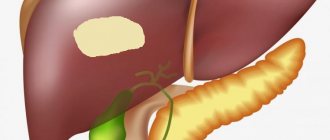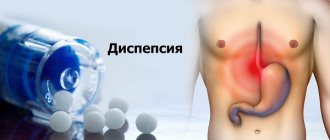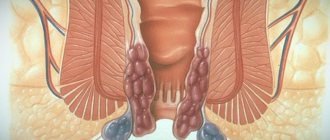The main causes of lactostasis
Mostly, lactostasis in women is observed in the first months after childbirth. This is often caused by the fact that the young mother does not attach the baby to the breast correctly and does not know the correct positions for feeding. In addition, the main causes of the disease are:
- flat nipples and cracks on them;
- small size of milk passages, with large milk production;
- nervous tension and stress;
- mammary gland injuries;
- severe compression of the chest during sleep or wearing tight clothing;
- hypothermia, draft;
- incomplete emptying of the mammary glands.
If lactostasis is not prevented in time, it can cause the development of mastopathy, which leads to serious complications. Therefore, help with lactostasis is mandatory. Many people are interested in what to do with this condition and how to get rid of the signs of the disease. In addition to medical care, milk stagnation in nursing mothers can also be treated at home. I would like to note that treatment with folk remedies very often turns out to be much more effective.
Causes of lactostasis
- The mother does not often feed the child or does it by the hour, waiting for precise periods of time.
- Mom holds a certain part of the breast with her finger while feeding. A common case: the mother holds the dimple near the child’s nose with her finger so that he has something to breathe. You just need to find and accept a position in which the chest does not hang too much and put pressure on the child, but this skill needs to be trained. A mother may incorrectly offer her breast to her baby by pinching it between her index and middle fingers, thereby squeezing some part of the breast or duct. Most often it becomes a habit.
- A woman feeds her baby for a short period of time, fearing that the baby will suck at the breast or overeat.
- Sleeping on your stomach can cause a blocked milk duct.
- Minor chest contusion, microtrauma.
- Mom wears a tight bra.
- Stressful situation, overwork, because breastfeeding is not an easy process. Don't forget about rest.
- Lack of night feedings while the breasts are filling.
- The baby does not latch onto the breast correctly, causing poor milk flow in a certain lobe of the breast.
At the initial stage of lactostasis, you may feel good, without fever or redness of the chest. But if nothing is done, the temperature may rise and uninfected mastitis may begin. In such a situation, the temperature rises above 38, and all other symptoms of lactostasis only get worse.
First aid for lactostasis at home
Treatment of the disease must begin at its initial manifestations. First of all, you should establish normal milk flow and prevent its stagnation. The easiest way, which is recommended to use at home, is to put the baby to the breast more often, choosing comfortable positions, this will help to completely empty the breast. Before you start feeding, you need to warm up the mammary glands well with a hot shower or use a warm compress or heating pad. This will help dilate the blood vessels and make the breast skin more elastic. In order for the baby to be able to suck the milk completely, choose comfortable positions and massage the breast while the baby eats. If milk remains after feeding, the most reliable method to remove congestion in the breast is to pump regularly. Often this procedure is painful, however, you need to be patient. While pumping, you need to choose appropriate positions and massage your breasts. Expressing is carried out until the breasts become soft, after which it is advisable to take a warm shower; if there are cracks in the nipples, then lubricate them.
Some breastfeeding mothers have very sensitive nipples, and if the positions during breastfeeding are chosen incorrectly, then cracks and small wounds may form on them. As a result, feeding becomes painful, which often leads to stagnation of milk or a decrease in its production. Therefore, you need to do some simple procedures after feeding :
- keep your breasts open for some time after feeding;
- lubricate cracks with a special cream;
- in difficult cases, use a breast pump.
Symptoms of lactostasis
The main sign of the onset of the disease is a sharp increase in temperature, which is accompanied by the following symptoms:
- painful sensations in the chest;
- redness of the skin around the source of inflammation;
- feeling of full chest;
- compaction of glandular areas of tissue;
- uneven flow of milk during pumping;
- deterioration of the woman’s general well-being.
Lactostasis occurs in the first three months after the baby is born and the mother returns home.
The most common folk recipes for treating lactostasis
Treatment of lactostasis at home offers a considerable number of recipes that are absolutely safe for nursing mothers.
Cabbage treatment
Cabbage not only has excellent taste, but also contains many healing components that help get rid of most ailments. Cabbage leaf in the fight against lactostasis is also, perhaps, one of the most common and proven methods. It helps relieve inflammation in the mammary glands, facilitates the flow of milk, and relieves pain well. In order to make a compress, you need to take a cabbage leaf, lightly beat it until the juice appears, and then apply it to the sore spot. After a few hours, when the sheet dries, it needs to be replaced with a fresh one. The number of procedures depends on the severity of the disease. If nursing mothers are not allergic to honey, a compress can be made with honey, that is, apply a thin layer of honey on a cabbage leaf. After the procedure, wash your breasts well before feeding.
Treatment of lactostasis with chamomile
You can treat this disease at home with the help of chamomile. Its healing properties are well known; it perfectly eliminates inflammatory processes inside. For this purpose, with lactostasis, it is recommended to take chamomile tea regularly. In addition, chamomile lotions on the breasts also have a good effect in case of milk stagnation in nursing mothers. You need to take 2 tablespoons of dry chamomile, pour a glass of boiling water and leave. Then moisten the napkin and apply it to the sore spot. You can keep this compress for about 30 minutes, repeat 3 times a day.
Eucalyptus
Traditional medicine recommends treating lactostasis with eucalyptus leaves. Eucalyptus leaf is poured with cold water and boiled for 10-15 minutes over low heat, left for 24 hours. After this, you can wipe the nipples with the infusion and also lubricate the mammary glands.
Onions in the treatment of lactostasis
Onions deserve special attention when treating this disease in nursing mothers at home. To prepare this recipe, you need to take an onion and finely chop it, you can also pass it through a meat grinder. Then take a spoonful of onion pulp, mix it with a spoonful of honey and add rye flour to make a thick dough, make a small cake and apply it to the mammary glands. The cake should be changed three times a day.
In addition, baked onions have also proven excellent in the treatment of lactostasis. It is baked in the oven and applied warm to the chest. Thanks to this method, milk flow improves, inflammation is relieved, compaction is removed, and pain is reduced. Do not forget that you cannot use hot onions.
Camphor oil
A good effect for eliminating milk stagnation can be achieved using camphor oil. To do this, you need to make special compresses. Camphor oil is applied to a napkin or a clean piece of cloth, applied to the chest area, plastic wrap is applied, then the chest is wrapped in a woolen scarf. It is better to carry out this procedure in the evening and keep the bandage on all night. After this, wash the mammary glands well.
The recipes listed above can be easily prepared at home. In addition, they cope well with the symptoms of lactostasis without causing harm to both the baby and the mother.
LACTOSTASIS: causes, mechanism of development, treatment and prevention
Home > Articles > LACTOSTASIS: causes, mechanism of development, treatment and prevention
Lactostasis is a consequence of dysfunction of the mammary glands in women during breastfeeding between the production and release of milk, leading to stagnation of milk.
Lactostasis is considered by many experts as a quantitative discrepancy between increased or often normal milk production and its insufficient outflow.
CAUSES OF LACTOSTASIS
I. Increased milk secretion
Overproduction is when more milk is produced than the baby needs. Typically, normalization between milk production and milk flow occurs within the first 2 weeks after the birth of the baby.
II. Anatomical and physiological factors of lactostasis
1. Variants of the structure of the mammary glands. This applies primarily to women with large, sagging breasts. The child cannot completely empty the milk ducts, which leads to the formation of stagnation of milk.
2. Abnormal structure of the nipple of the mammary gland. Unpronounced, especially flat, nipples do not allow the child to grasp and hold the nipple correctly. In this case, the breastfeeding mother's mammary glands are not emptied enough, which can ultimately lead to lactostasis.
3. Anatomical structure of the ducts of the mammary glands. With narrow and tortuous milk ducts, especially their combination, the likelihood of developing lactostasis sharply increases.
4. “Milk plug.” Blockage of one or more milk ducts by a “milk plug” leads to a mechanical cessation of milk outflow and is the cause of lactostasis during breastfeeding.
5. Cracks in the nipple and areola. Damage to the integrity of the skin on the nipples of the mammary glands leads to difficulty in breastfeeding, even to the point of abandonment, and the likelihood of developing not only lactostasis increases.
6. Diffuse fibrocystic mastopathy. It has been noted that with mastopathy, fibrous tissue grows in the mammary glands, which has a very dense structure and can compress the ducts of the mammary glands, disrupting the outflow of milk during breastfeeding.
7. Injuries of the mammary glands. Various types of injuries (bruises, impacts due to falls, etc.) of the mammary gland lead to disruption of the morphology and functioning of the ductal lobular system and the formation of milk stagnation.
8. Hypothermia of the mammary glands. Severe hypothermia leads to the fact that the milk ducts are greatly narrowed, which greatly complicates the outflow of milk and can contribute to the development of lactostasis.
III. Behavioral factors in the occurrence of lactostasis
1. Incorrect attachment of the baby to the breast, when not all lobules are in the same “physiological position,” can lead to compression of the milk ducts. This leads to the rapid development of not only lactostasis, but also to injury to the nipple with the appearance of cracks.
2. Insufficient breast emptying, as well as irregular breast emptying, can most likely result in stagnation of milk.
Too long periods of time during breastfeeding, exceeding 3 hours, often lead to congestion.
3. Additional pumping of milk can lead to additional milk production, which the child cannot handle, which can lead to lactostasis.
IV. Other factors
1. Tight underwear. Wearing tight underwear, especially a bra, leads to pinching of the milk ducts and stagnation of milk.
2. Stress and lack of sleep can lead to physiological narrowing of the ducts, disruption of outflow, resulting in areas of milk stagnation in the mammary glands.
3. Heavy physical labor can lead to pinching of the milk ducts, making it difficult for a nursing mother to outflow milk, which can result in lactostasis.
4. Sleeping on your stomach can also lead to compression of the milk ducts and stagnation of milk.
MECHANISM OF LACTOSTASIS DEVELOPMENT
The formation of lactostasis is typical for primiparous women in the first weeks and months after childbirth. Moreover, lactostasis in the first days after childbirth is pathogenetically different from milk stagnation during regular breastfeeding.
In the first days after birth, a rapid decrease in the level of placental steroids against the background of a sharp increase in prolactin secretion leads, on the one hand, to the accumulation of milk in the alveoli of the mammary gland, and on the other hand, causes swelling of the mammary gland tissue and compression of its ducts. The situation is complicated by the lack of stimulation of the nipple-areolar zone, early attachment of the baby in the first hours after birth and pumping of the mammary glands, which is collectively reflected in low production of oxytocin and paresis of the milk ducts. As a result of a lack of oxytocin, milk stagnates in the alveoli and does not enter the milk ducts. All these phenomena ultimately lead to swelling, engorgement and soreness of the mammary glands.
It has been established that, regardless of the cause of its occurrence, uncontrolled lactostasis pathogenetically proceeds according to the standard pattern and, as a rule, ends in mastitis.
TREATMENT OF LACTOSTASIS
Therapy for lactostasis is complex and includes changing the regimen and frequency of feeding, and conservative therapy.
Regimen and methods of breastfeeding for lactostasis.
Alternate breastfeeding should be abandoned for a while in favor of feeding with both breasts every 1.5–2 hours; if necessary, the feeding interval should be reduced to an hour. Night feedings are mandatory.
Role, pumping technique.
Expressing remains an important part of the fight and with lactostasis it should be carried out not only carefully, but also technically correctly.
For this purpose, to overcome lactostasis, a breast pump has shown its effectiveness, before using which it is necessary to carry out a soft and gentle massage of problem areas and thermal procedures.
With lactostasis, pumping is carried out until a state of comfort, and not until the “last drop,” so as not to increase the production and flow of milk.
Rules for pumping during lactostasis. You should grasp the mammary gland with the seal with the same hand so that it lies on the palm, the thumb is on top, the rest support and lift it. In this case, the milk will flow painlessly and the nipple will not be injured. At the same time, with the other free hand, the area of compaction is massaged in the direction from the periphery to the center of the mammary gland, freeing it from milk.
Expressing is made easier by taking a No-Spa tablet 20–30 minutes before feeding, a warm heating pad applied to the breast, and expressing after feeding the baby. You can carry out these activities and do it under a warm shower.
It should be noted that strong compression of the mammary glands during rough expression can lead to trauma to the lobular-ductal system of the mammary glands and can lead to the development of mastitis.
Changing the position of the child and mother during feeding with lactostasis
With lactostasis, you need to use poses that help release the mammary gland from milk in those areas where it has stagnated. In such cases, hand feeding is often effective.
Breast massage
When performing a massage of the mammary glands, all movements should be soft, smooth, in the direction from the base of the breast to the nipples.
Heat and cold treatments
To achieve the effect, before feeding and pumping, it is recommended to take a warm shower or apply warm, damp wipes to the mammary glands, which helps improve milk flow. After feeding, cold applications are used for 10–15 minutes, which reduces milk production.
Ointments and compresses
The goal of all ointments and compresses is to reduce swelling of the mammary gland and improve milk flow, relieving spasm of the milk ducts. Magnesium sulfate, ointments are used: traumeel C, malavit.
Ultrasound Applications
To relieve lactostasis, ultrasound is used, usually 3-4 procedures are prescribed, the breast gland is massaged over the lump using the sensor of an ultrasound device for physiotherapy, after which the milk must be expressed immediately.
Drug reduction of milk secretion
Treatment regimen for lactostasis 1. Bromocriptine (Parlodel) is prescribed 2.5 mg 2 times a day. within 2–3 days. Gentle pumping of the mammary glands is added 2–3 hours after starting to take the drug for 1–2 days, breastfeeding – after 1 hour.
Treatment regimen for lactostasis 2. Dostinex 1 mg is prescribed, ? table 1 time a day for 1–2 days, breastfeeding – every 1 hour.
Treatment regimen for lactostasis 3. Cutaneous applications of 2.5 g of 1% progestogel gel once a day for 2 days, additionally expressing the mammary glands - 15-20 minutes after application, breastfeeding - after 1 hour.
Optimal combination: bromocriptine + progestogel, dostinex + oxytocin.
Oxytocin for lactostasis
In case of severe lactostasis, you can use sublingual administration of the drug, 2 drops per 15 minutes. before feeding. In rare cases, intramuscular injection of oxytocin is used in a single dose of 0.2–0.3 ml.
Antibiotics are not indicated for lactostasis.
NSAIDs. Taking paracetamol and other nonsteroidal anti-inflammatory drugs (NSAIDs) is possible, especially with severe pain, and does not affect breastfeeding.
Drug suppression of lactation
If there is no expected effect within 1.5–2 days, a thorough differential diagnostic procedure should be carried out to exclude lactation mastitis. For this purpose, it is necessary to repeat an ultrasound of the mammary glands with a puncture biopsy of the problem area of the mammary gland with a thick needle.
If the use of all measures for lactostasis is ineffective, moreover, there is a threat of development or mastitis has developed, the question arises of a complete cessation of lactation.
Bromocriptine is better known and most often used in practice for this purpose according to the following regimen: 2.5 mg 2-3 times a day for 3-5 days. Lactation stops within a couple of days when taking the tablets according to the regimen.
Of the modern drugs for this purpose, Dostinex is used in a dosage of 1 tablet. 1 time per day for 2 days. Lactation usually stops within 1 day. Rarely, due to ineffective suppression of lactation, it is necessary to extend the course of treatment to 3 days.
PREVENTION OF LACTOSTASIS
1. The correct position of the baby at the breast allows a nursing woman to avoid many problems and complications.
Signs of correct attachment:
- Silence during feeding (except for the sounds accompanying the baby's swallowing of a portion of milk). Other sounds, in particular “clicking” or “smacking”, indicate a broken vacuum and insufficiently effective sucking.
- The child's mouth is wide open (angle at least 130–140?), the chin is pressed tightly to the mother's chest, the lower lip is completely inverted, the tongue covers the lower gum and is visible in the corner of the mouth.
- It is not painful for the mother to feed; at the end of feeding, the nipple is evenly extended and has the shape of a cylinder. A deformed nipple indicates an impaired latching technique.
2. Criteria for correct sucking:
- The baby sucks slowly, rhythmically, deeply.
- There is no drawing in of air (with sound) and swelling of the cheeks.
- The baby's ears move rhythmically while sucking.
3. Signs of improper sucking:
- The child sucks (“chews”) only the nipple; The newborn's tongue interacts only with the tip of the nipple.
- The lips (gums) press only on the nipple, and not on the entire areola.
- The lips are sucked into the oral cavity.
4. Feeding on demand of the child. It is necessary to attach him to the breast for any reason, giving him the opportunity to suckle when he wants and as much as he wants. This is very important not only for satiating the child, but also for his feeling of comfort and security.
5. The duration of feeding is regulated by the child. You should not take your baby off the breast before he releases the nipple on his own. This can lead to insufficient emptying of the breast.
6. Night feedings of the baby ensure stable lactation and protect the woman from stagnation of milk. In addition, night milk is considered the most complete.
7. When breastfeeding separately with two breasts in turn, the time interval between feedings should not exceed 3 hours, including the night period. If congestion occurs, the interval should be reduced to 2 hours, or even switch to breastfeeding with both breasts.
8. If there is a tendency to develop lactostasis, each feeding should be carried out from both mammary glands, while finishing feeding with the same breast with which you started. This feeding technique promotes better emptying and drainage of the mammary glands, eliminates injury to the nipples, and also prevents the baby from swallowing air.
9. You should not transfer the baby to the second breast before he has sucked the first breast, this can lead to stagnation of milk.
10. If there are cracks, you should use products that promote rapid healing (Bepanten, Purelan 100, Avent, etc.)
11. To prevent the formation of cracks, frequent washing of the breasts before and after feeding should be avoided.
Frequent breast washing leads to the removal of the protective layer of fat from the areola and nipple, which leads to the formation of cracks. The mammary glands should be washed no more than once a day during a hygienic shower. If a woman showers less often, then even in this case she should wipe with a damp cloth without using soap before feeding.
12. Additional milk expression. With properly organized breastfeeding, milk is produced exactly as much as the baby needs, so there is no need to pump after each feeding. The need to pump appears when the child’s suction is insufficient and/or milk stagnation occurs.
The most correct positions during feeding
To completely empty your breasts, it is also very important to choose the right positions. The most suitable poses are recommended:
- "Soccer ball". The baby is positioned to the side of the chest on a pillow. Mom holds baby like a soccer ball while playing American football. The baby's legs are turned towards the mother's back, the tummy is at hip level, so it turns out that the baby is located under the arm.
- "Jack". This position allows you to feed the baby while lying down; you can also place a small cushion under his back to secure the baby.
- "Overhang." The baby lies on a barrel, because he can choke on his back, and his mother hangs over him. This position allows milk to flow better through the ducts and makes sucking easier. This pose is very effective for any manifestations of lactostasis.
What to do at home with lactostasis
Following a few rules will help cure the disease quickly and effectively.
- An effective way to treat lactostasis at home is to use dry heat. To do this, just warm up a small napkin with an iron and apply it to the painful area. It is necessary to repeat such manipulations several times a day.
- Following a drinking regime will help remove the milk plug. Doctors recommend that young mothers drink as much drinking water as possible.
- Self-massage of the breast. The main thing is not to use too much force. Injuries will only make things worse.
- Treatment using traditional medicine.
- Pumping. Organizing the outflow of milk on your own is suitable in case of insufficient emptying of the breast by the child.
During the treatment of pathology, it is forbidden to drink large quantities of hot drinks.
Prevention of lactostasis at home
In order to avoid this disease, you need to follow some preventive measures:
- Choose comfortable feeding positions for your baby.
- Nursing mothers should also have comfortable positions.
- It is best not to put pressure on the breast when feeding your baby.
- The mammary glands should be protected from various injuries and damage; even the slightest bruise can cause stagnation of milk.
- You need to wear high-quality bras made from natural fabrics that do not compress the mammary glands.
- During sleep, it is undesirable to sleep on your stomach, as the channels are compressed, which often provokes the occurrence of lactostasis.
- Avoid stress.
- Take air baths.
- Regularly monitor the condition of your nipples.
- Before feeding the baby, wash off the cream or any pads.
- Massage your breasts regularly.
- After feeding, wash the mammary glands with warm water.
It should be remembered that it is important to identify the first symptoms of the disease in order to avoid further complications and the development of mastopathy. Therefore, it is necessary to regularly examine the mammary glands of nursing mothers. If milk stagnation is detected, it must be treated immediately!
What is lactostasis?
Lactostasis is commonly understood as stagnation of milk in the mammary glands. Without treatment, this complication of breastfeeding progresses, causing various pathologies (mastitis, sepsis).
Many young and inexperienced mothers experience lactostasis. This problem is most often caused by incorrect and infrequent attachment of the baby to the breast.
Also, stagnation of milk in the glands can be provoked by mechanical injuries, wearing tight underwear, refusal to breastfeed, hypothermia and a number of other factors. If lactostasis occurs in a nursing mother, treatment should be started immediately.











